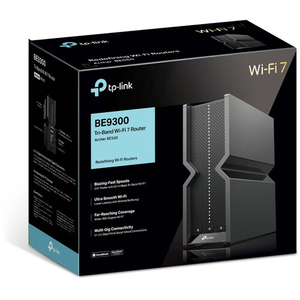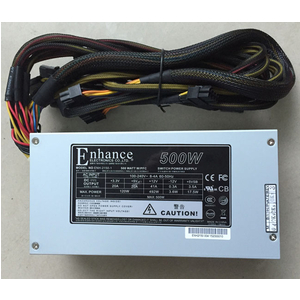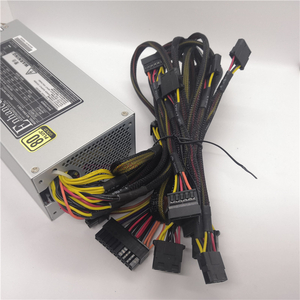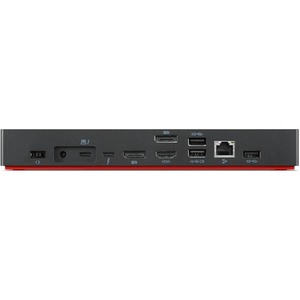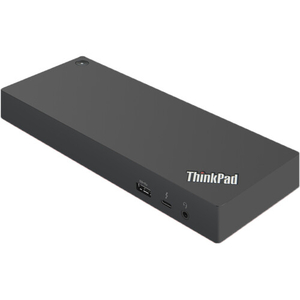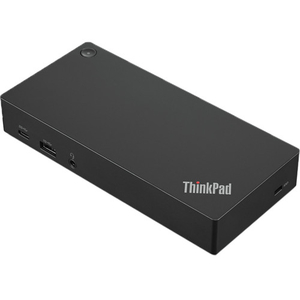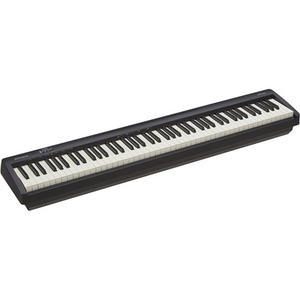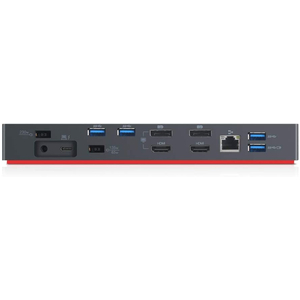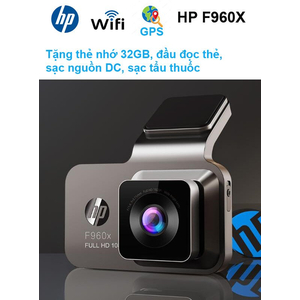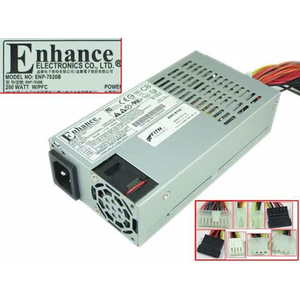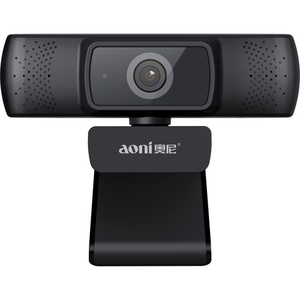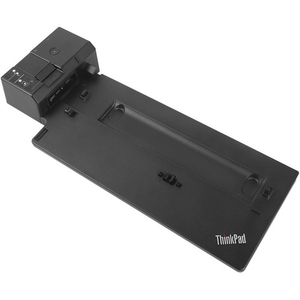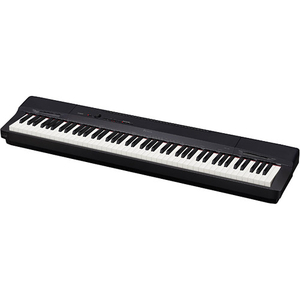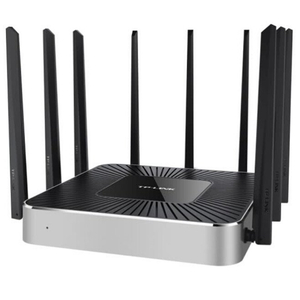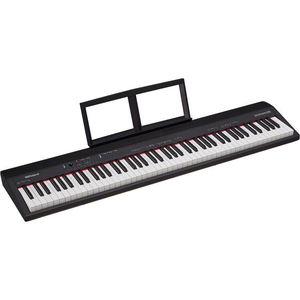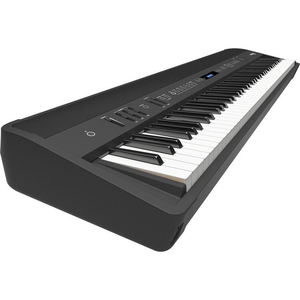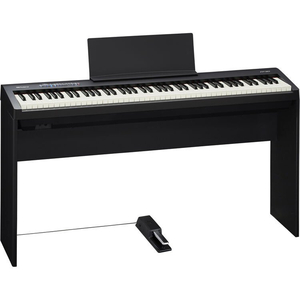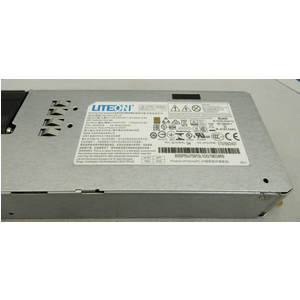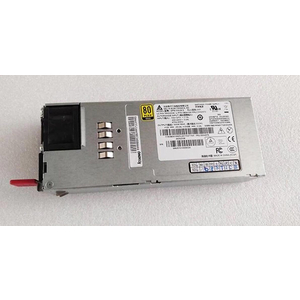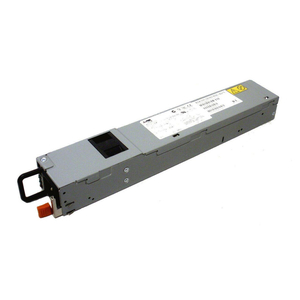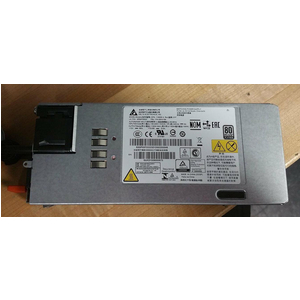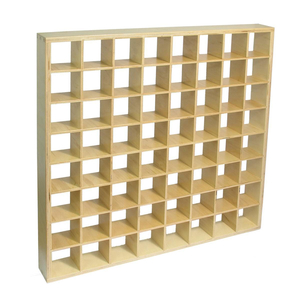>> Hướng dẫn đặt hàng trực tuyến
Giá có thể thay đổi chưa kịp cập nhật, xin vui lòng liên hệ trực tiếp để biết giá
Tên thiết bị: Primacoustic Razorblade Quadratic Residue Diffuser
Model: Primacoustic Razorblade Quadratic Residue Diffuser
Thương hiệu: Primacoustic
Hình ảnh thiết bị như hình chụp
OVERVIEW
The Razorblade is a high-performance quadratic residue diffuser (QRD*) based on a primitive root sequence that employs a grated array of 17 precisely calculated wells to break up and scatter acoustic energy to create a diffuse sound field.
Originally developed by Schroeder, QRDs have long been considered to be one of the most effective forms of diffusion. A series of wells are mathematically arranged in such a fashion that sound waves entering the device reflect back into the room at different times, thus shifting their relative phase. This produces both spatial dispersion (left and right) and temporal dispersion (time shift) which effectively eliminates flutter echoes, breaks up strong first order reflections, and reduces standing waves without overly deadening the space.
Unlike light-weight plastics that are unable to control powerful low frequencies, the Razorblade combines heavy, MDF slats with a furniture grade solid wood laminate surround for added mass and rigidity. The grated 24″ x 48″ array is made up with a series of 17 deep, narrow wells that will effectively diffuse acoustic energy from 425Hz to over 5.5kHz with excellent scattering down to 200Hz. This makes the Razorblade particularly effective in varients of the LEDE (live-end, dead-end) studio control room designs where several units are typically clustered across the rear wall, spanning the width of the work surface.
Once in place, the Razorblade creates a sense of air and space, giving the impression of being in a much larger room. This creates a more natural and comfortable working environment. The Razorblade is ideally suited for studio installations, soft seat theaters, high-end home theaters and performance venues.
Applications



Specifications

The Razorblade™ is a 24” x 48” x 8” (61cm x 122cm x 20.3cm) quadratic residue diffuser (QRD) that will effectively break up standing waves and directional reflections to provide a sense of air and increased space in any room. Ideally suited for recording studios, theaters and critical listening environments, the Razorblade features a series of 17 wells of varying depth that combine to effectively scatter frequencies as low as 400Hz.
The Razorblade is constructed using a combination of furniture-grade plywood for durability and medium density fiberboard slats for increased rigidity and mass. It ships fully assembled in an attractive black finish.

| Frame Material | Baltic Birch outer frame, MDF inner |
| Dimensions | 24” (610mm) x 48” (1219mm) x 8” (203mm) |
| Weight | 75.1 lbs (34.0 kg) |
| Color | Black |
How to Use
The Razorblade is a high performance diffuser designed for professional studios and more demanding audio listening environments.
The full size 24″ x 48″ design with full 8″ deep wells makes the Razorblade particularly effective at diffusing directional frequencies above 400Hz. The Razorblade’s sequence has been optimized so that multiple units can be mounted side by side in a modular fashion. This enables the designer to set the desired number of diffusers in an array that will span the desired wall surface area. Once in place, problems such as modal distortion, flutter echo and standing waves are significantly reduced.

For a diffuser to work at lower frequencies, it must be heavy and rigid. This of course leads to questions such as placement and mounting. Good news is that we designed the Razorblade so that mounting is both easy and quick: Following the same approach one would take when mounting a series of kitchen cabinets, the Razorblade is designed to ride on top of a ‘base rail’ to carry its weight. Placement on the wall is generally 36″ to 48″ off the floor to allow for both sitting and standing positions.
Placement in the room is generally behind the listening position at an optimal distance. The general rule of thumb is to position the diffuser two ~ three times the lowest wavelength behind the listening position (further is better). Since the Razorblade is designed to work down to 400Hz, this ends up being about between six and eight feet away or 2 ~ 2.5 meters (Fig. A).
The Razorblade array should span the width of the listening area. If your console is 6 feet wide (2 meters), one would usually cluster three Razorblades together. Of course a wider array will provide a wider diffuse area. For rooms with larger work areas, to save costs, some designers will combine products like the FullTrap as a means to treat the rear wall using a product that has a similar profile and dimensions.
Basic Installation Procedure

1. Set the height of the Razorblade by sitting in the listening position and measuring your ear height. The Razorblade should be positioned in such a way that it is balanced between the ear height and ceiling height or slightly higher.

2. Run a base line using a pencil mark. Cut a 3” thick rail (3/4” x 3”) and screw it to the wall and make sure the rail is properly secured to the internal wall studs.

3. Prepare the top anchor points. Drill two holes through the back into the outer wells. These have been cleverly designed to reach all the way to the back, thus enabling them to be used with wall anchors. We recommend 1/4″ toggle bolts.

4. Rest the Razorblade on the support rail, mark the anchor positions and attach the Razorblade to the wall. Because the weight will be resting on the support rail, the top two anchors need only to hold the Razorblade in place.
Razorblade Science
A quadratic residue diffuser such as the Razorblade is a device designed to break up directional sound waves and reduce powerful first order reflections, standing waves and flutter echo. It is an excellent complement to sound adsorption because it does not remove energy like acoustic panels.
Diffusers reflect the energy back into the room. But unlike flat reflective surfaces that mirror energy, the Razorblade radiates the energy in a hemi-disc pattern to create a more diffuse acoustic space. This eliminates acoustic glare and gives the impression of being in a larger, more natural environment.
Although diffusion has been around since Roman times, in recent years advanced mathematics have spawned new designs in recent years that deliver predictable results. Pioneered by Physicist M. Schroeder, quadratic residue diffusers or (QRDs) employ a series of mathematically calculated wells of varying depths. These are set in a sequence based on prime root numbers in effort to diffuse energy in an equal fashion.
Sound arrives as a wave front and enters the diffuser’s phase grid where it will be reflected back into the room. Since the wells are of varying depths, the energy exits at different times relative to each other. This both shifts their relative phase or temporal mode (time shift) and spreads the energy across the grid creating a spatial shift (width in space).

Sound arrives as a wave-front (blue). Without diffusion, the wall’s flat, hard surface reflects energy back (red) like a mirror causing echo. This can be in the form of first-order reflections, flutter echo or room modes.

The wave-front enters – energy strikes the shallow wells first & reflects back into the room while the remainder continues into deeper wells. A ‘temporal shift’ occurs ‘over time’ as it enters, reflects and exits the diffuser.

When identical frequencies enter and exit identical wells at the same time, they will be in phase and reinforce each other. If they exit at different times phase cancellation occurs relative to the frequency & well depth.

As waves exit the various wells, they interact causing energy to disperse across the phase grid resulting in a horizontal ‘spatial shift’. This spreads sound in a hemi-disc, resulting in a greater sense of space.
Not all diffusers are created equal!

It is important to note that not all diffusers truly diffuse. Most devices would be more appropriately called reflectors or sound scattering devices. These reflect and scatter acoustic energy, but unlike true QRDs, they do not do so in an even fashion. In other words, they may scatter sound at one frequency while causing other frequencies to beam. Considering a QRD like the Razorblade is complex in nature and difficult to build, the economics often make these various sound scattering devices a cost effective alternative.
QRDs like the Razorblade employ a primitive root sequence to mathematically calculate the well arrangement. The higher the number of wells, the more diffuse the sound will be; the narrower the slats – the higher the frequency they will diffuse, the deeper the wells – the lower the frequency they will extend down to. It is the combination of well depth sequence, grated design and depth-to-width ratio that actually causes the energy to spread out and be broken up. Herein lays the magic of the QRD.
A. The well width determines the upper frequency limit of diffusion. The narrower the well, the higher the frequency it will diffuse.
B. The deepest well in the sequence determines the diffuser’s lower limit. The Razorblade’s deep well design is effective down to 400Hz.
C. The higher the prime number sequence, the more even and smooth diffusion will be throughout the audio spectrum

Predicting the low frequency performance
Sound is made up of various air molecule compressions commonly called sound waves that vary in length depending on the frequency. Lower frequencies have longer wavelengths. Given the same amplitude, these contain more energy than shorter high-frequency wavelengths which make them all the more difficult to control. Furthermore, it is generally accepted that sound begins to beam or become directional above the 300Hz to 400Hz region. If a diffuser’s primary function is to break up directional sound energy, it follows that the optimal diffuser should reach down into this lower frequency range. These criteria set the low frequency performance target for the Razorblade.
When designing a quadratic residue diffuser, the deepest well determines the lowest the frequency that it will effectively diffuse. It is also important that the device be rigid enough that the bass will not cause it to unduly resonate and contain sufficient mass so that the energy does not merely pass right through.
To predict the low frequency performance of a diffuser, one applies a quarter-wavelength calculation: For example, one can estimate that the low frequency cut-off point of a 3” deep (7.62cm) diffuser will be approximately 1130Hz. It is generally accepted that sound will continue to scatter by as much as an octave below this point which will yield a low frequency limit at around 565Hz.
The following table shows the expected low frequency cut off of a QRD based on the maximum well depth:
| Well Depth (inches) | 1″ | 2″ | 3″ | 4″ | 5″ | 6″ | 8″ | 10″ | 12″ |
|---|---|---|---|---|---|---|---|---|---|
| Well Depth (cm) | 2.5cm | 5cm | 7.6cm | 10cm | 12.7cm | 15.2cm | 20.3cm | 25.4cm | 30.5cm |
| Low Freq. Cut Off | 3,390Hz | 1,695Hz | 1,130Hz | 848Hz | 678Hz | 565Hz | 424Hz | 339Hz | 283Hz |
| Extra Octave* | 1,695Hz | 848Hz | 565Hz | 424Hz | 339Hz | 283Hz | 212Hz | 170Hz | 141Hz |
* Although the Razorblade can be ‘calculated’ to perform down to 424Hz, it will in fact continue to scatter energy down as low as 212Hz thus the reason the extra octave is identified in the table above.
The Razorblade’s deepest well measures 8” (20.32cm). Quarter-wavelength calculations dictate a low frequency cut-off at 425Hz. This prediction was substantiated by Dr. Bouhioui who performed advanced computer modeling on the Razorblade employing what is known as the ‘Finite Element Method”. While working for Boeing, he developed a proprietary algorithm that breaks down the wave, transmission medium and resulting vibrations to predict the noise caused by air flow of the airplane windows. A similar approach was employed using quadrangles to predict the Razorblade’s performance.
It is of interest to note that many acousticians predict the low frequency diffusion will further extend down an octave* below the measured quarter-wave. The belief is that sound continues to scatter below the cut-off point producing audible benefits. Based on this, one can predict the effective low frequency range of the Razorblade will extend down to 212Hz.
This has more to do with the scattering effect of the diffuser which will not stop at a specific frequency, but instead have less and less effect as the frequency goes down. There is documentation on the web that points to diffuser authority T.J. Cox from Stanford University, whereby he suggests that the practical low frequency range can be approximated by multiplying the well depth by a factor of 11. This would suggest the Razorblade will work down to 150Hz. But since most agree that sound tends to beam above the 300Hz~400Hz region, we have chosen to ‘specify’ the Razorblade’s diffusion start point at approximately 400Hz with sound scattering providing positive benefits down one octave below.
Calculating the high frequency cut-off point
For fun, clap your hands in an empty room and you will likely hear a series of echoes as sound ricochets off the walls, ceiling and floor. This is known as flutter echo or room chatter and is very pronounced in rectangular shaped rooms with hard surfaces. What you are hearing is the high frequency waves bouncing off these surfaces causing what are known as specular reflections or a mirror-like effect. High frequencies are more directional than low frequencies and therefore act like beaming light vectors. Compared to bass, given the same amplitude, these quickly loose their energy as they travel though mediums such as air, liquid or solids.
In a Schroeder diffuser, the width of the well mouth determines the highest cut off frequency. The narrower the width, the higher the frequency the device will diffuse. But if the well width is too narrow in relation to the depth, the device begins to resonate which reduces the effectiveness of the diffuser as it exceeds its viscous limit. On the other hand, if the well is too wide, high frequencies will simply reflect back into the room with very little effect. Schroeder proposed that the maximum high frequency limit will be ½ the wavelength of the well width. The following table shows predicted high-frequency limits of a QRD depending on well width.
The following table shows the expected high frequency limit of a QRD based on the well width:
| Well Width (inches) | 0.5″ | 0.75″ | 1″ | 1.25″ | 1.5″ | 1.75″ | 2″ | 3″ | 4″ |
|---|---|---|---|---|---|---|---|---|---|
| Well Width (cm) | 1.27cm | 1.9cm | 2.5cm | 3.2cm | 3.8cm | 3.4cm | 5cm | 7.6cm | 10cm |
| High Freq. Limit | 13,560Hz | 9,040Hz | 6,780Hz | 5,424Hz | 4,520Hz | 3,874Hz | 3,390Hz | 2,260Hz | 1,695Hz |
The Razorblade employs a grated array of 17 wells that are tightly packed into an 8” deep, the 24” wide frame. Each well is divided with a rigid 3mm MDF slat board and each well ends up being approximately 1.25” wide. Calculations show the Razorblade will effectively diffuse high frequency energy up to 5424Hz. Dr. Bouhioui measured the high frequency diffusion and his tests show exceptional performance.
Maximizing the bandwidth and effect

As described above, increasing the diffuser’s well depth lowers the effective frequency, while narrowing the well width increases the effective bandwidth within the practical limit posed by the self-resonance (viscous effect) that can occur inside the wells if too narrow. The greater the number of wells or the higher primitive root sequence; the more even the dispersion will be. This is because each well depth will have an effect on the given frequency and harmonics. For instance a device with 3 wells will not be as effective at diffusing energy as one with 17 wells. The down side is that as you increase the depth and well count, you increase the complexity which makes the device more difficult to build… and therefore more expensive.
The Razorblade’s QRD design delivers balanced spectral diffusion across the bandwidth while also producing excellent temporal behaviour. Graph (A) shows a powerful first order reflection as one would encounter before diffusion is applied. In the second (graph) you can clearly see how the peak energy has been shifted over time.
Mass and resonance

To stop sound, you need mass. Stand outside a nightclub and what do you hear? Bass. Once bass frequencies get started, they are almost impossible to stop. Put a plastic bag over a loudspeaker and you can be sure that the plastic bag will not stop the sound. The same applies to diffusion. Unless the device has mass (i.e. made from a heavy material) bass will simply pass right through.
Over the years, several manufacturers have attempted to produce lower cost diffusers by applying various forms of mass production. A popular approach is to build a mould and fill it with some sort of light weight material such as polystyrene. If a concrete wall cannot contain bass, how can one expect a Styrofoam device to do so? For a diffuser work in the lower frequency range, it must be made from high density materials and be very rigid.
The Razorblade is made from high density MDF slats that are both heavy and stiff. The outer shell is further reinforced using furniture grade plywood and the top and bottom are routered, clamped and glued to bond the device together. Dr. Bahooui conducted extensive computer modeling that took into account both the physical design, ie: size and depth of the wells, along with the physical construction of the device. Dr. Bahoui modeling reports that the Razorblade’s stiff and heavy construction will only resonate at frequencies below the target performance curve and therefore are not of significance. In practice, any low frequency absorption will be beneficial as it will help reduce low frequency reflections in the studio.
Chúng tôi vận chuyển tận nơi trên toàn quốc, nhận hàng thanh toán tiền cho người giao hàng. Hà Nội nhận hàng trong ngày. Các tỉnh khác nhận hàng 1 -2 ngày
Liên hệ: 0946.112.556 - 0320.2.223.225 - 0320.3.841.496.
© Bản quyền thuộc về công ty TNHH VNM
www.dienmayviet.com.vn www.dienmayviet.vn
Nhà phân phối trên toàn lãnh thổ Việt Nam. Miễn phí vận chuyển tận nơi trên toàn quốc, nhận hàng thanh toán tiền
Thiết bị được phân phối bởi: Công ty TNHH MTV Phát Triển Công Nghệ Máy Tính VNM
Hotline: 0946.112.556 - 0320.2.223.225 - 0320.3.841.496
E-mail: Product.vnm@gmail.com
Yahoo online: vnm_colorvis_sale
Hàng chính hãng, Full box, new 100%
Công ty TNHH VNM. Nhà phân phối sản phẩm chính hãng
Pin laptop chính hãng, sạc laptop chính hãng, pin máy ảnh chính hãng, sạc máy ảnh chính hãng, pin máy quay chính hãng, sạc máy quay chính hãng. Vui lòng truy cập www.chinhhangpin.com hoặc www.pinoriginal.com
Website trực thuộc quản lý của công ty TNHH VNM:
www.dienmayviet.vn
www.dienmayviet.com.vn
www.chinhhangpin.com
www.pinoriginal.com



